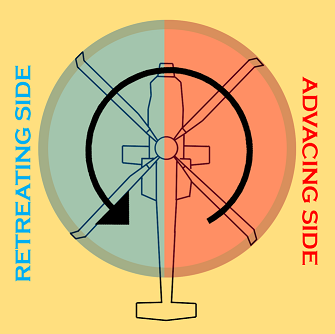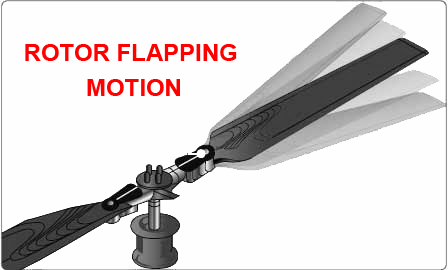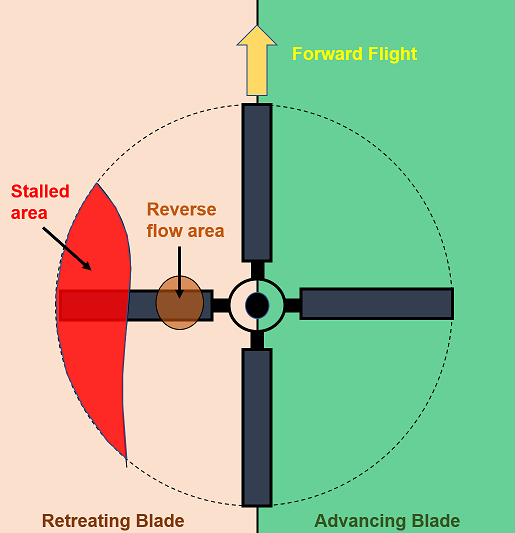¶ Introduction
Retreating blade stall is a hazardous flight condition in helicopters and other rotary wing aircraft, where the retreating rotor blade has a lower relative blade speed, combined with an increased angle of attack, causing a stall and loss of lift.
¶ Advancing and Retreating Rotor Blades
A rotor blade that is moving in the same direction as the aircraft is called the advancing blade and the blade moving in the opposite direction is called the retreating blade.

¶ Effect of Increasing Airspeed
In forward flight, the relative airflow in the advancing side of the main rotor is faster than the retreating side. In the advancing side, forward speed is added to the rotor speed and in the retreating side, forward speed is subtracted from rotor speed.
With higher relative airflow, the advancing blade creates more lift than the retreating blade and this difference increases with increasing forward speed.
Rotor blades are designed to compensate this lift asymmetry by freely moving up and down, this movement is also called flapping.

The advancing blade flaps upward during its advance to decrease the Angle of Attack and create less lift; the retreating blade flaps downward during its retreat to increase the Angle of Attack and create more lift.
At some point as the forward speed increases, the low blade speed on the retreating blade, and its high AoA cause a stall and loss of lift.

The speed whereat the retreating blade starts stalling is the most common Vne speed limitation for helicopters.
¶ Symptoms of Retreating Blade Stall
The symptoms are:
- Rotor roughness and vibration
- Nose pitch up movement
- The helicopter may roll to the left or right depending on the rotor rotation direction
Helicopters equipped with semi-rigid rotor systems may not experience a nose pitch up
¶ Contributing Factors
The contributing factors in addition to high forward speed are:
- High weight
- Low rotor rpm
- High density altitude
- Turbulence
- Steep, abrupt turns
Retreating blade stall is encountered at a lower forward airspeed at high altitudes. Thus, the required high speed factor should be understood as a speed higher than Vne.
¶ Recovery
When pilots are faced with a retreating blade stall, they will notice a nose up attitude accompanied with rotor roughness and vibration.
Both forward and back cyclic input will increase the angle of attack and deepen the stall.
The correct solution for any stalling airfoil is decreasing angle of attack.
The angle of attack of rotor blades are controlled by the collective and the required recovery action of retreating blade stall is lowering the collective.
- None
- VID 522050 - Creation
- VID 496402 - Wiki.js integration